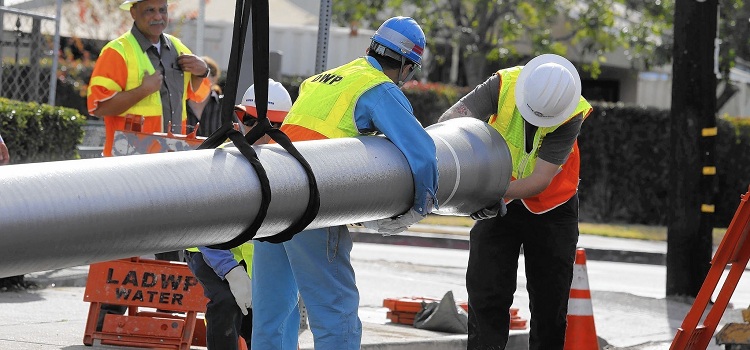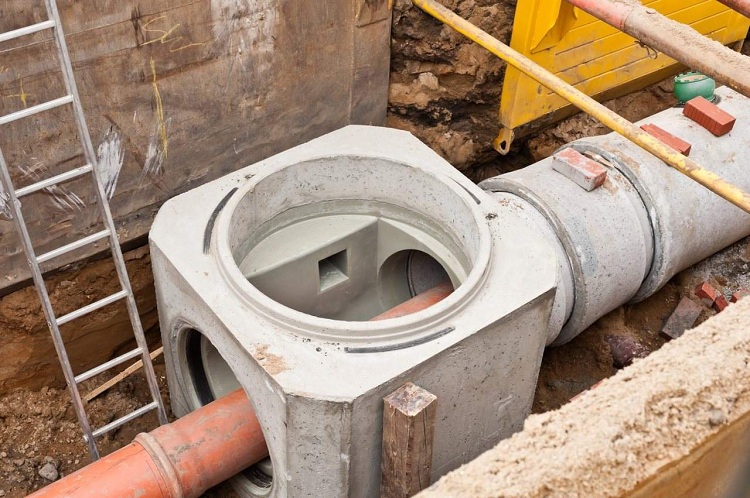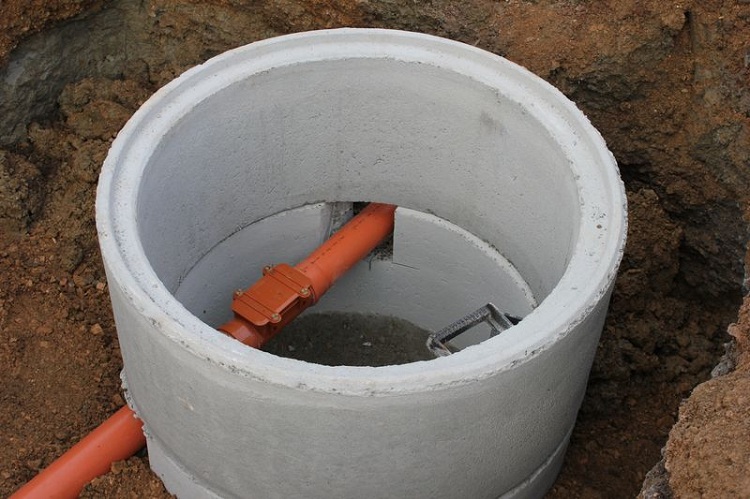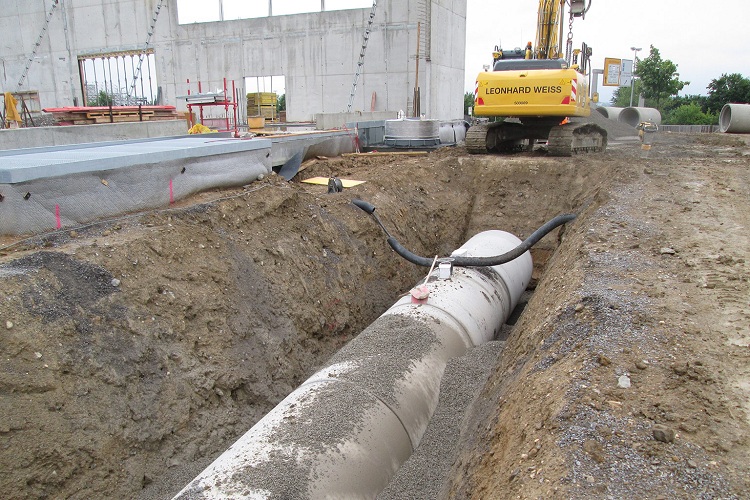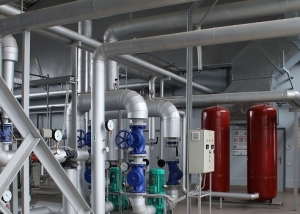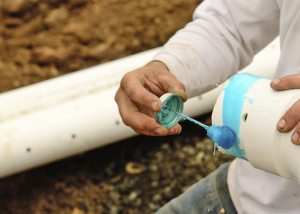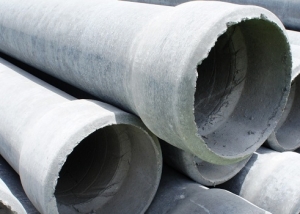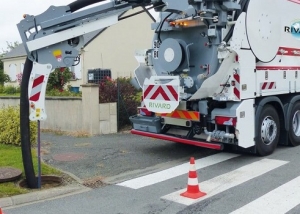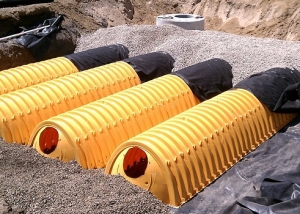Pressure pipes are products that are used to install a forced sewage system. In most cases, the sewer network for private houses is pressureless or gravity, as a rule, this type of sewage is laid underground. However, there are cases when there is a need to install a pressure system, which, in most cases, passes on the surface (external type). Pressure pipes are used for such a line, they can be made of various materials: steel, polyvinyl chloride (PVC), etc. Asbestos-cement and cast-iron products are also in use, but they are not used as often as before.
Content
Pressure sewer device
Pressure sewer is a design that discharges wastewater from plumbing fixtures. The main difference between pressure communication and gravity-driven are the pumps, thanks to which water disposal is carried out.
Using such a network, it is possible to transport wastewater over long distances. In addition, unlike a pressureless system, in which the sewer pipe is located at a slope, pressure systems can be laid at any angle.
The pumps are equipped with special grinders that crush large particles of debris into smaller ones. This is a very useful property, as it allows the construction of pipes with smaller diameters (for gravity drainage, the standard pipe section is 110–160 mm, while pipes with a diameter of 32 to 50 mm are suitable for pressure pipes). In addition, such communications are not afraid of blockages and stagnation of wastewater.
Pump elements, as a rule, are made of durable steel alloys that reliably and efficiently cope with their work. The service life of such a system is quite long, so its installation fully pays off with time.
Note! An important point is that such a system must necessarily be connected to a source of electricity. Without power, this design will not function.
Pumping stations are usually divided into two types:
- intra-house;
- outdoor.
House stations are usually located in basements and they serve, as a rule, one building.
The main elements of such stations include:
- capacity;
- chopper;
- pump.
Outdoor pumping stations are used to service several buildings. They are located on the street. Wastewater is collected by a special tank, drains are discharged to it from several houses. Then the waste is discharged into a centralized sewage system or to a sewage treatment plant. All this work is carried out thanks to pumps that control the movement and pressure of the medium in the pipes.
Advantages and disadvantages of pressure sewer
To select sewer communication for a specific case, you need to familiarize yourself with its characteristics.Studying the pros and cons of the drainage structure will help make the right decision.
The advantages of a pressure system:
- ease of installation without complex calculations. Installation of a pressure system does not require compliance pipe slopes and minimizing pipeline turns;
- installation of such a system allows you to save on material due to the fact that you can install a pressure pipe of smaller diameter;
- installation of this structure is less labor-consuming, since it is not necessary to dig trenches of great depth;
- self-cleaning due to grinders;
- high installation speed;
- long term of operation.
The disadvantages of such a system include:
- additional costs for electricity.
- pressure communication requires the obligatory arrangement of many viewing wells for its maintenance.
Helpful information! Pressure sewer is able to ensure the discharge of wastewater from a small village. This allows you to install one unit and share the costs between residents.
Materials for pressure pipes
Pressure pipes are available in various materials. Each of the types of such products has unique technical characteristics.
Pressure pipelines from metals and alloys
Steel. Steel pipes are strong enough and reliable, withstand huge pressure indicators, but their use as a sewer system is not recommended, because they are susceptible to corrosion. They can only be operated for a short time. In some cases, they may come up. If, for example, it is required to lay a temporary construction that is resistant to high pressure. In addition, the disadvantages of steel parts include electrical conductivity.
Cast iron. Such products are considered classic, which are time-tested. This material used to be ubiquitous, however, with the invention of new, better, and less expensive materials, cast iron sewer pipes faded into the background. But their production is still ongoing and is in good demand.
They are resistant to mechanical stress and in some cases (for example, laying a pipeline under the road surface) can not do without them. Their connection with each other is carried out using special extensions at the ends - sockets. Pig-iron pressure head bell-shaped pipe has a big weight and differs in complexity of transportation, installation. In addition, such pipes are a rather expensive option.
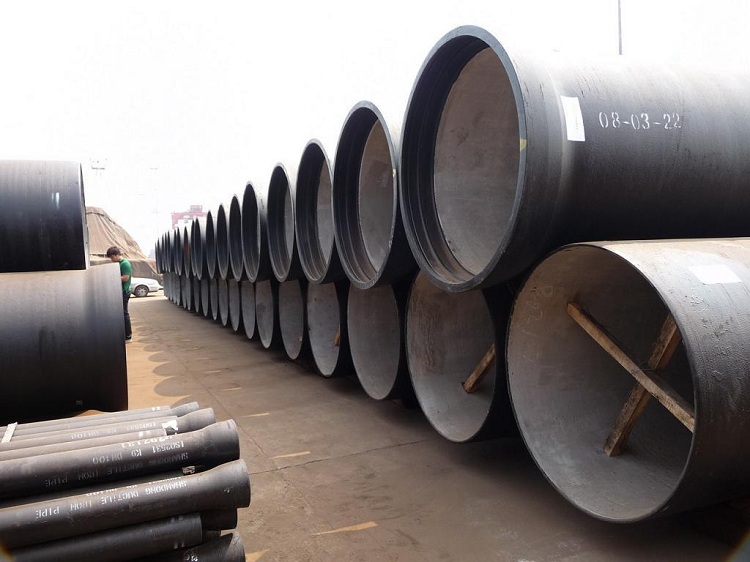
Cast iron pressure pipes are used in conditions of increased loads, for example, for laying pipelines under roads
Plastic pressure pipes
Polyvinyl chloride (PVC). PVC pressure pipelines are used for low pressure indicators in the system. They have low ductility and therefore are not suitable for bending. However, the branching problem of this design is easily solved with the help of a variety of pipes and transition elements to them. Sealing joints between these parts is carried out by special rubber seals. The service life of o-rings is from 15 to 20 years.
Low pressure polyethylene (HDPE). The pressure pipe made of low-pressure polyethylene (HDPE) has a small weight, good anti-corrosion properties, which, as studies have shown, increase. In addition, they tolerate temperature extremes. HDPE pipes also have excellent ductility, low cost and durability.
Polyethylene (PE). Pipelines made of this material are the most suitable option for installation as pressure sewers. PE pipes have good ductility and strength. The walls of such products are thicker than their PVC counterparts. The connection of the elements with each other is the same as with PVC pipes.They have excellent corrosion resistance.
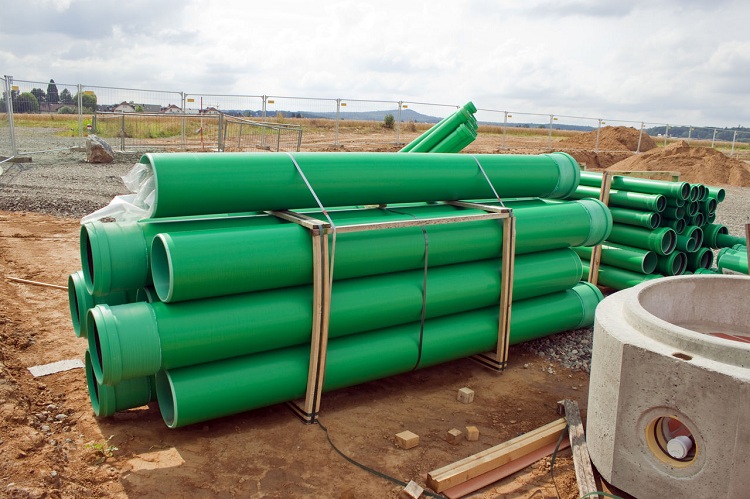
Plastic pressure pipes are characterized by properties that provide products with a long service life.
Due to its plastic characteristics, PE pressure pipes can be bent at a certain angle, without compromising strength. The operational life of these products can reach up to 100 years or more. Due to the smooth surface of the walls, they do not accumulate debris and salt deposits, which significantly reduces the possible clogging of pipes.
Other materials
Reinforced concrete. Pressure sewer reinforced concrete structures are distinguished by their large size. They are able to withstand high pressure. Due to the fact that they are heavy, their installation is carried out with the participation of special equipment.
Note! Sewer pipelines of large diameters have a limited selection of materials. The production of plastic pipes with a cross section of 200 mm is impractical, since they can deform and burst due to the effects of temperatures and other factors. And steel pipes of this diameter are almost impossible to install because of the huge mass. Based on this, it turns out that reinforced concrete is the main material for sewer pipelines with a large diameter. Such products are often installed on approaches to collectors.
Asbestos-cement pipes. Asbestos-cement pressure pipe is used in cases where it experiences a load only from pressure in the system itself. Indices of system pressure for such pipes are extremely small. In addition, they are not recommended for use at low temperatures, because the material becomes brittle.
Pressure head asbestos-cement pipe is cheap, however, its acquisition should be justified. It’s worth buying these pipes only if you are completely sure that they will bear all the loads in a particular case. Due to their low strength, asbestos-cement pressure products are often laid below the level of soil freezing.
In what cases is it recommended to install a pressure sewer?
In most cases, it is quite enough to use pressureless sewer, however, there are situations when the installation of a pressure system is necessary. These include:
- the terrain where the pipe will run has strong differences;
- moving soils that do not allow to mount the pipeline structure at the required depth;
- in the event that it is necessary to establish a long-distance communication, which will make it impossible to comply with the pipe slope necessary for normal drainage;
- in case the building is located below the level of a centralized sewage system.
In all these situations, you can not do without pressure sewer. When designing a network, it is recommended to consider all factors that may affect its operational characteristics. In addition, a very important point is the choice of pump model.
Arrangement of a sewer system for a private house is a complex event that requires the necessary skills and care. If you are not confident in your own abilities, then the best solution would be to call specialists on this issue who will carry out the necessary calculations and install pipes for pressure sewage in a quality manner.
